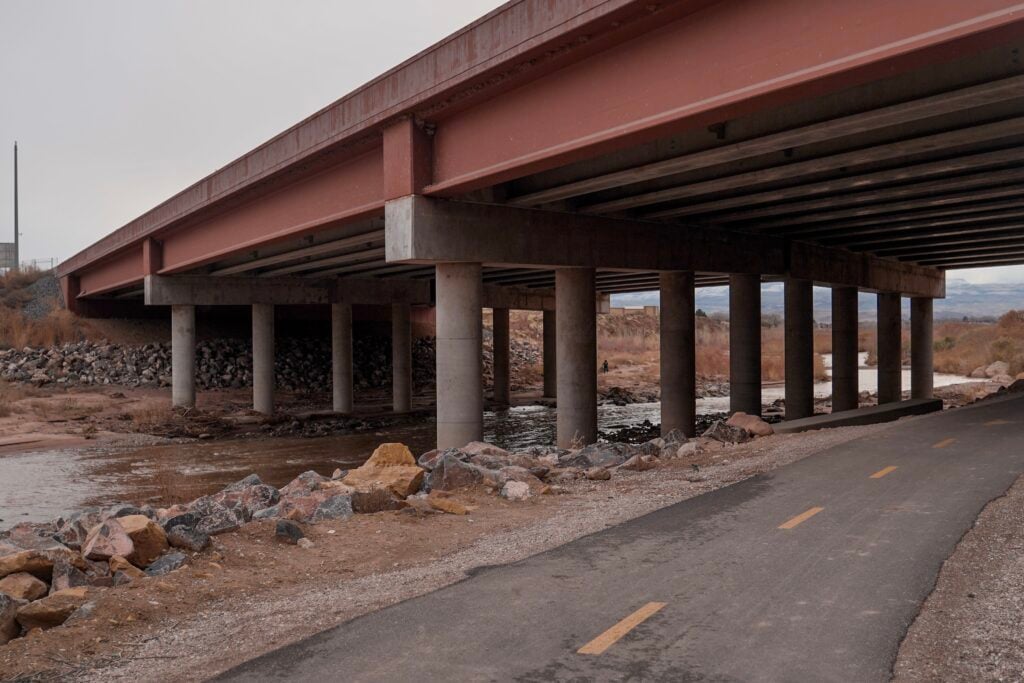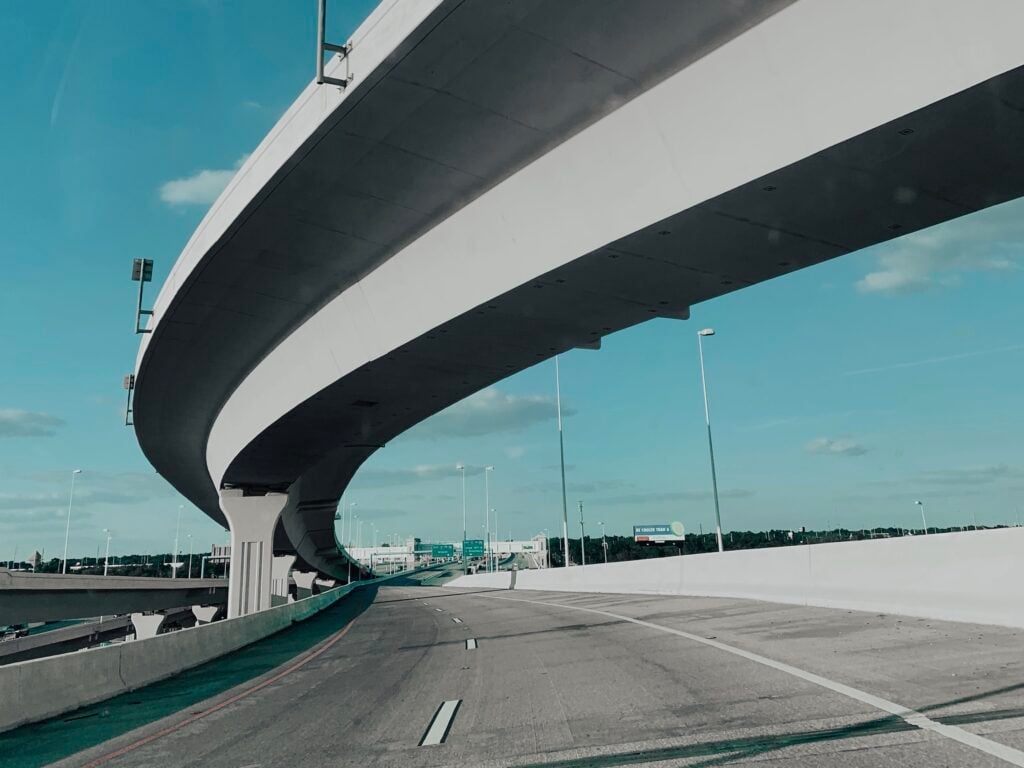
Don’t Let Low Clearance Accidents Ruin Your Trip
Driving an RV can be stressful. In order to keep you and everyone around you safe, and to avoid damaging your RV, you have to keep in mind that your vehicle is a much bigger size. This means watching corners carefully and leaving a lot of space between you and the person in front of you. It also means you’ll need to keep height in mind when going under bridges, tunnels, and even trees, to avoid low clearance accidents.
Top 7 Tips to Avoid RV Roof Collisions
In this article, we will focus on ways you can ensure you and your RV don’t end up in any low clearance accidents. Read on to learn our top tips and tricks.
1. Know your height
The first step to avoiding low clearance accidents is to know your height. You’d be surprised how many RV owners have no idea how tall their rig is. This means that when they come across signage telling them how tall an upcoming bridge is, they have no idea whether they’ll fit or not.
Obviously, this is a problem, and that’s why we recommend memorizing your RV’s height (including the A/C and anything else on the roof) before you ever hit the road. Just knowing this little bit of information could save you from a potentially costly accident!
2. Use an RV trip planning tool
Now that you know how tall your trailer or motorhome is, the next step is to plan your routes according to that height. How do you go about doing this?
The best, most comprehensive trip planning tool for RVers is RV LIFE Trip Wizard. This tool allows you to put in your RV dimensions and plans your routes accordingly, never putting you on a road with a bridge or tunnel that is too short for your trailer or motorhome.
3. Use an RV-specific GPS
Once your routes have been planned, you could of course print them off and use them. However, this is time-consuming, and accidentally missing a turn could prove to be problematic. Instead, we recommend using an RV-specific GPS like the RV LIFE App.
The app downloads directly to your phone (no new hardware needed), and allows you to import routes directly from RV LIFE Trip Wizard, meaning you can put all that trip planning to good use. Better yet, you can change plans on the fly and even read campground reviews before you book any stays along the way.

- Use an RV-specific GPS like the RV LIFE App to avoid low clearance bridges, tunnels, and more.
4. Download your maps
Do you enjoy wandering into the wilderness, but are afraid of being without a GPS and getting lost, or running into a low clearance tunnel or bridge? No worries! Another great feature of the RV LIFE App is that it allows you to download maps. This means you can use the GPS even when you’re in the middle of nowhere with no cell coverage. Wander wherever you like and never worry about getting lost or running into clearance issues again.
5. Carry a Truckers’ Atlas
Of course, even if you download maps before you leave, it is still possible for other things to go wrong, leaving you without a GPS. For instance, your phone could get broken or lost during your trip.
For this reason, we highly recommend keeping a Truckers’ Atlas on hand. This handy book is updated annually and includes information that is important to truck drivers. This includes information on steep grades, as well as info on low-clearance bridges and tunnels—both of which will help you find your way safely even if you don’t have your GPS handy.
6. Watch for signage
Things change along routes all the time. Construction projects and accidents can create low clearances and other obstructions where there were none just the day before. For this reason, it’s impossible for any database to be 100% up to date 100% of the time, meaning it is possible that even with the best planning and tools, you could still come across a bridge or other obstruction that is too low for you to go under.
Because of this possibility, it is very important that you watch for signage along the way alerting you of low clearances—and in some cases, signs that offer alternate routes to larger vehicles.
7. Avoid low-hanging trees
Our final tip is one that seems obvious on the surface, but which many people forget: Watch for low hanging tree branches.
Campgrounds usually keep tree limbs trimmed up, but this isn’t always the case. Besides, sometimes you’ll find yourself driving under trees outside of a campground. Since trees rarely come with low-clearance warnings, it’s always a good idea to get out and check if you are at all unsure about whether you will fit under a branch.
Start planning an RV-safe route today
Hopefully these tips help you avoid low-clearance accidents so you can keep the top of your RV in tip-top shape for years to come. Of course, avoiding low-clearance accidents isn’t the only important thing to know as an RV owner. Be sure you know how to avoid all types of unsafe travel situations so you can keep yourself, your family, and your RV safe from harm.
For help mapping out your route for your next RV getaway, look no further than RV LIFE Trip Wizard. This online planning tool makes it easy to plan an RV-safe route. It can also locate interesting sites along the way, all according to your travel preferences. Get RV LIFE Trip Wizard with its accompanying RV LIFE App, and start planning your adventure today!

And don’t drive on bicycle paths.
Write the hight of your RV on a piece of tape and tape to the frame of the tow vehicle between drivers door and windshield. A quick glance is all that’s needed to have that crucial information.
Don’t trust or believe anyone else, especially the guy in the golf cart that takes you to your site. On our first camp with our Northpoint we went to Zane Gray in Camp Verde AZ. Yes I should have known better. However, after we parked the wing antenna was removed and a 12 foot scratch tore through the roof. Fortunately it “only” cost us $500 for the repair. When we looked around the park, many sites had limbs you couldn’t get travel trailers in without damage. Lesson learned don’t trust anyone.
Your first suggestion is good, but don’t memorize your height. Make labels with the height both in feet and meteoric. Post them above the gauges and at the top of the windshield that
way when you encounter a height sign you don’t have to think or remember, it’s right in front of the driver. If you aren’t the driver then the driver can easily know.
Thanks for you tips.
One thing to look at is the road surface before a possible height restricted path. I was a dispatcher at North American Van Lines when one of our trucks hit a low bridge. According to signage he should have cleared the bridge. City of Chicago tried to sue us till our investigators found City had recently resurfaced the road thereby decreasing road clearance that made the signs invalid. They had increased the road height 4 inches.
Do not go by the published height of your RV many of these heights do include Air Conditioners.
1 – Don’t believe ANY GPS or map, trucker or otherwise. They all Lie.
2 – Stay off anything in the north east that is labeled Parkway.
3 – Pay attention to bridge highs signs and make sure you are at least 6 inches lower that the posted sign. They may have paved the road after the sign was placed. Take it from someone that found his 13’6” coach on a New York parkway with posted 8’6” overpasses in front and ibehind
.
On the plus side the local police are very understanding and will help you get out of the mess.
There is no easy way to measure your vehicle’s total height and it also depends on tire and airbag inflation. If you ever plan on driving in Canada or Mexico, you’d better know it in metric.
Beware driving on any road called a “parkway,” especially in NY and NJ. They usually have untrimmed trees, no shoulders and low underpasses. If the sign says “no commercial vehicles” or has a truck picture with a red line through it, there’s a reason. Owning an RV, you may think that you’re neither a truck nor a commercial vehicle but the reasons for that signage is that the road or bridges either can’t handle the weight or there’s a low clearance or sharp curve issue. If you’re driving a 102″ wide vehicle, technically, you are only legal on interstate highways, not local roads. If at all possible, you should avoid the Capital Beltway. Its lanes are very narrow and you risk hitting another high profile vehicle’s mirror with yours. And while I’m mentioning specific roads, I-95 from Baltimore to Richmond on a Friday afternoon is usually a parking lot. It may be the shortest route, but consider taking I-81 instead.
Do not rely on the manufacturers sales literature for the overall height of your rig.
Turns out our motor home is 11′-6″ high, not 11′-3″ as published.
Most likely the difference is in the type and brand of AC unit installed.
Accurate way to measure RV height:
1. Locate your RV on a flat / level surface.
2. Tape a carpenters level to a “straight” 2×4.
3. From a ladder, place one end of the board on the
highest part of the RV.
4. Hold the board level while having a helper hold the
dumb end of a tape measure to the ground.
5. Take your measurement from the underside of the
board.
That’s it, you now know the real height of your RV.
Record this measurement on a note and display it on the dash for quick reference.